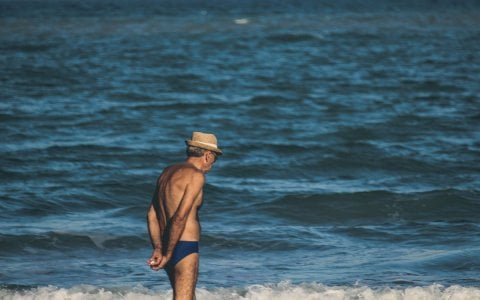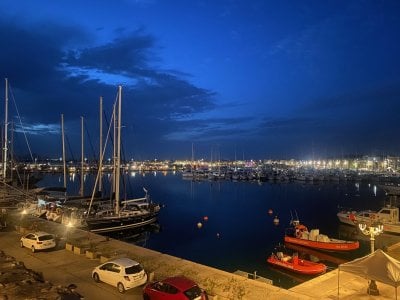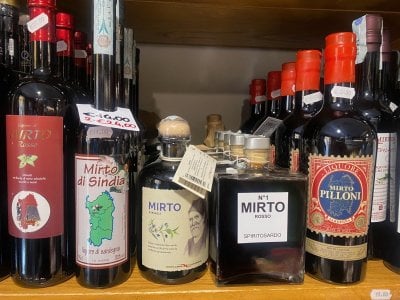How to live longer: Myths and truths from the very first Blue Zone
By
Kaye Fallick
- Replies 0
Kaye Fallick is a best-selling author and the founder of YourLifeChoices website. She is a passionate advocate for those over 60. Learn more about her work on her website: Staying Connected.
It doesn’t rain often in Sardinia, but on the particular Tuesday I’m meant to meet Professor Gianni Pes, it’s bucketing down. We’re staying in Alghero, a charming seaside town on the west coast of the Italian island of Sardinia. I selected this holiday destination because the University of Sassari is a short distance away, and it is here that the original ‘founder’ of the concepts of longevity in the ‘Blue Zones’ is based.
But if I am hoping to learn all the secrets of longevity from Professor Gianni Pes in one 60-minute interview, I am doomed to disappointment. I have misread the man and vastly underestimated the scope of his life work.
The rain only gets heavier as we trudge up the hill to the faculty where Gianni awaits us on the fourth floor. By the time we reach his office, we are soaked. Our driver has dropped us off at a ‘nearby’ intersection, which turns out to be nearly half a kilometre away from our destination. I begin to wonder if the whole idea of this interview is worth the time and effort. My very patient fellow traveller (and husband), David, remains mute and wet.
Professor Gianni guides us into his office on the fifth floor of the Department of Medicine, Surgery and Pharmacy in Viale San Pietro. He is every bit as charming and good looking as you would expect the Italian who uncovered the concept of Blue Zones would be.
Gianni doesn’t know me or my work, but he generously donates an hour or more of his time to explain the genesis of the Blue Zones and the status of current research. It’s illuminating. And his insights provide a useful antidote to what seems to be an overly glamorous ‘takeover’ of serious and hard-won Blue Zone research. Somewhere along the way, the inherent value of this research seems to have been swamped by a quick win, instant gratification approach to the science of living longer.
Gianni’s story is also one of how patient academic research, for all the right and wrong reasons, can suddenly turn into a health craze, often founded on the desire for quick wins by those unable to stick to basic exercise and nutrition routines. When it comes to lessons from the Blue Zones, the first one is that there are no easy answers or short cuts to good health.
To be honest, I too, at first thought that during my Sardinian holiday, I might somehow inhale the zeitgeist and get all the answers. I might climb some high hills in Sardinia’s Barbagia region, sniff the breeze and voila! A new slim Kaye would appear, with strong prospects of living to 100 and beyond with energy, humour and an unstoppable zest for life.
Of course it doesn’t work that way.
The Blue Zones – areas of exceptionally high longevity - were discovered and named by a Belgium demographer, Michel Poulain and Italian professor, Gianni Pes, back in 2000. A native Sardinian, Gianni had an uncle who had lived to over 100. This captured his interest in the causes of the dramatic longevity in the hill towns of Sardinia, but when he presented his research at a demographic conference, his peers questioned it - particularly the finding that men in Sardinia live as long as women do. That was unprecedented. So Gianni and Michel Poulain joined forces to travel across the mountainous regions of eastern Sardinia, checking and cross-checking local residents’ birth and death certificates. Whenever they identified a region with high numbers of centenarians and super centenarians, they would mark the village on the map with a blue dot. Hence the Blue Zones came into being.
Both Michel Poulain and Giani gained further prominence when National Geographic reporter, Dan Buettner wrote an article about them, The article became a book and then a documentary, ‘The Blue Zones: nine lessons for living longer’
But along the way some fundamental truths have been lost or at least modified. And we’ve now reached a point where many other nations (Australia included) are suddenly searching for their own longevity hot spots so they too can join the crowd. In the original Blues Zone locations of Sardinia, Okinawa and Costa Rica, locals are now dealing with health warriors and journalists who arrive without warning, don’t speak their language but seek quick answers to ancient questions, without too much annoying academic detail. We now seem to have more myths about Blue Zones than truths
Maybe I, too, was one such pesky writer. But meeting Gianni, the founder of the concept of Blue Zones, has given me a much better understanding of his work and the austere lifestyles behind the longevity he studies.
Here’s what he shared that rainy afternoon…
There are three not five actual zones
Using the strict definitions of the original Blue Zones, there are only three areas in the world that can claim to support exceptional longevity: the Barbagia region in eastern Sardinia, The Nicoya Peninsula in Costa Rica and the Japanese island of Okinawa. Yes, there are five in Dan Buettner’s book, but Gianni asserts that Loma Linda in the US does not qualify (it is more a religious community than a geographic area) and that whilst the Greek island of Ikaria has many similar factors to the original three Blue Zones, the population is too small to be statistically relevant.
It's not about the red wine
Much is made by Blue Zone and Mediterranean lifestyle fans of the ‘need’ to drink red wine. This is a bit of a fantasy according to Gianni. He is fairly ambivalent on the benefits of alcohol. On the one hand, he says, any alcohol can have a detrimental effect on our health. On the other, there is evidence to suggest that there are beneficial ingredients in the local Barbagian vino. But the emphasis on the benefits of wine have been interpreted as a licence to drink a lot, which is at odds with the factors important to a longer life.
Other factors that matter
Gianni highlighted some other local factors that his research suggests will increase longevity. He instances the lower carbohydrate sourdough bread which Sardinian Blue Zone residents enjoy daily, with the very positive side effect of lowering diabetes
He also believes that the sheer isolation of the villages in these regions has meant that the negative effects of modern society have been kept at bay for much longer than in other, larger population centres.
Then there are a couple of other aspects of the Sardinian Blue Zones that are difficult to replicate. These are the intense social cohesion of small village life, where no one is truly isolated or disconnected. And then there is the ‘less is more’ concept of frugality, where hard work - often involving many steps up and down steep hillsides - and making do with what you have can inevitably lead to a sense of fulfillment and enhanced life satisfaction.
So simply upping the cucumbers, tomatoes, sourdough and red wine is not sufficient to help you achieve a longer, happier life. You’re going to have to put in much more work than that!
Okay, so we can’t all live in a village high in the mountains of Sardinia, baking our own low-carb bread and herding sheep at a ripe old age. But we can learn from the extensive research of people such as Michel Poulin and Gianni Pes and reconsider the balance in our own lifestyles. The Harvard School of Public Health has also published the five core actions they believe to contribute most to longevity – and they are very similar to the lessons first uncovered by Gianni and his colleague Michel:
- healthy diet,
- regular exercise,
- healthy weight,
- no smoking and
- moderate alcohol, supplemented by a sense of purpose, meaning and strong social connections.
In Okinawa there is no word for retirement.
In the Barbagia region of Sardinia, there are no retirement homes.
It was inspiring to meet Gianni and learn the reasons why!
About the Author: Kaye Fallick is a writer and best selling author. She is also the founder and former publisher of the YourLifeChoices website which she believes gave her a 20-year ‘apprenticeship’ in learning the health, money and lifestage dramas and concerns of Australian baby boomers. She’s an advocate for Australians over the age of 60 and we are delighted to have her on board, writing content for you. If you’d like to know more about Kaye, you can visit her website, Staying Connected.










